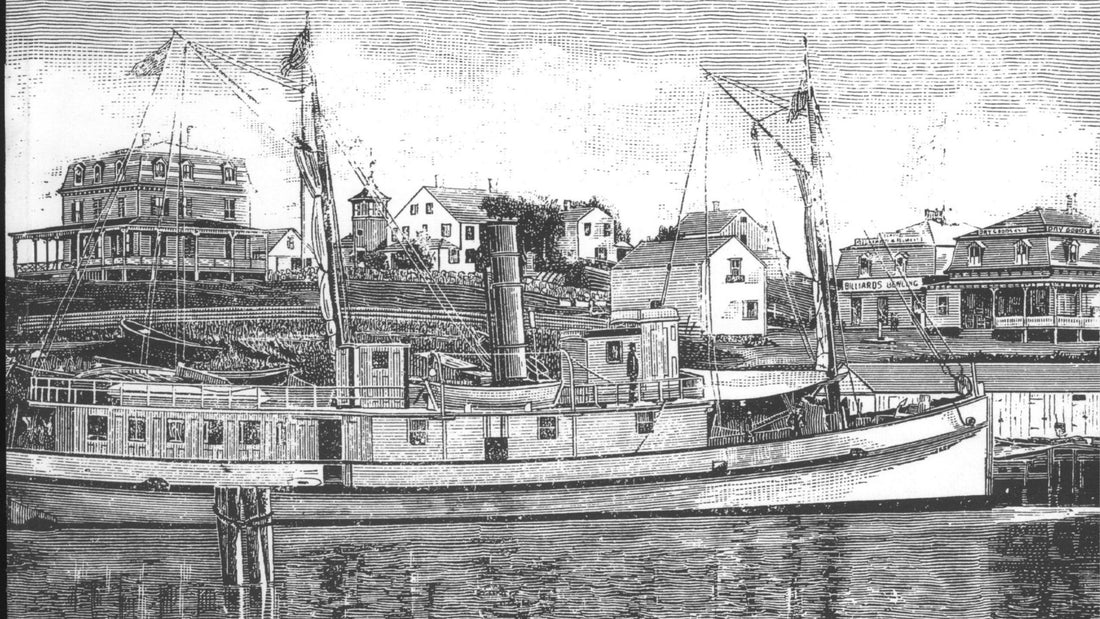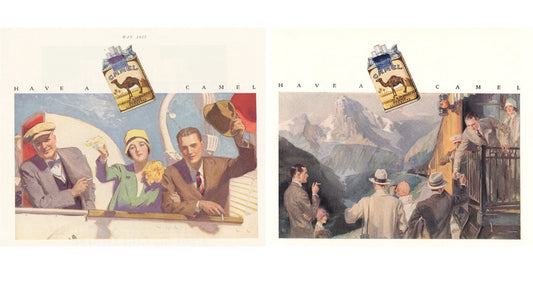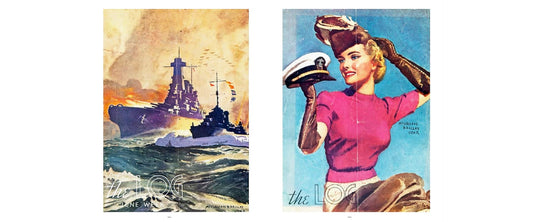
The Beauty of Block Island and the Power of the Sea
Share
First impressions, first paintings and McClelland Barclay’s lifetime of inspiration from the sea.
The sea can be both beautiful and brutal, as we have witnessed this month in Florida. That’s also true in the life experience of artist McClelland Barclay (1891-1943).
Fashionable Summer by the Seaside
As a young boy, McClelland Barclay was lucky enough to enjoy summertime visits to the attractive and popular seaside resort of Block Island, Rhode Island in 1898-1900. Off the tip of Montauk, Long Island and close to Martha’s Vineyard, the new Block Island steamship ferry service helped the Barclays and many others flee their hot cities for sea breezes, sand and seafood. These summertime delights combined to give young Barclay the opportunity to see dramatic maritime landscapes, observe fishing and sailing vessels and the awesome power of the sea up close.
In my illustrated biography, McClelland Barclay: Painter of Beautiful Women and More, you can read about how the sea, and Block Island in particular left lasting impressions. Barclay later wrote about them as his earliest memories and lifetime passions.
One of my first recollections is the fishing fleet coming ashore on the beach at Block Island with their brightly colored sprit-sails bellying in the wind - McClelland Barclay, memoirs
Down on the beach, Barclay would have been able to see fishermen haul their catch because Block Island at the time lacked a good harbour. Until Government Harbor (Old Harbor) was built, he was likely observing double-enders, or ‘peapods’ as they are commonly known. Peapods are small 14-18 foot wooden fishing boats pointed on both ends allowing the fisherman to stand while hauling in lobster traps and fishing lines. Some would have had a mast with sails to catch the wind.
For years by necessity the Island made use of the double-ender, a distinctly New England boat which could be easily landed on the beach. - Historic and Architectural Resources of Block Island, Rhode Island, Rhode Island Historical Preservation Commission, 1991, p.21
These maritime impressions lasted a lifetime and are captured in many of McClelland Barclay’s works. Here are just a few examples.
 |
 |
Left: Sailfish pipe stand; Middle Double fish brooch; Right: miniature bronze and green-plated seahorse figurine
Drawn to the sea
It seems this experience on Block Island inspired some of his first works as a very young artist. At the southeast end, the famed Mohegan Bluffs rise 200 feet above the Atlantic. You can’t see the ocean until right at the edge. A similar dramatic seascape is the subject of the small marine oil painting of a rough sea Barclay did at age 9 (see image above). He painted a schooner at full sail in 1906 at age 15.
Learning to see the sea, and then painting it is among the most challenging of subjects to capture for any artist. McClelland Barclay spent a lifetime observing and illustrating every aspect of it: the water, along with its teeming marine life, fishing vessels.
In 1911, the summer after graduating high school, he spent the summer collecting fish specimens for the U.S. Bureau of Fisheries at Woods Hole, MA. When not working, he and friend hired a catamaran to sail to dances at Oak Bluffs on Martha's Vineyard.
A few years later, he was a struggling young artist in New York. When ad agency commissions were scarce in July and August, Barclay again supplemented his income by working on New England fishing trawlers.
Pleasure craft
During the 1920s and 1930s Barclay returned to the sea again and again through his art: capturing affluent nautical lifestyles with stylized Art Deco illustrations of fashionable people on sailboats, diving into water and frolicking on the beach. Many of his illustrations were commissioned and published on the covers of popular magazines such as The Pictorial Review and Country Gentleman. You can see similar themes he used for advertisers such as Atlantic Gasoline “Balance”, and Jansen swimwear, which are among other illustrations shown in my book.
These editorial and commercial works idealizing a seaside lifestyle helped in establishing Barclay as a successful artist in New York City during the 1920s. During this period, he regularly visited the seaside and in 1931 exhibited his works at the Guild Hall in East Hampton, a famed artist community on Long Island, and eventually bought a studio there.
Navy war art
It was under very different circumstances, during WWI, and WWII, that Barclay remained close to the sea by joining the U.S. Naval Reserve.
He drew concepts for warship camouflage during WWI. As a commissioned officer in WWII, his war effort was most powerful as an artist. Working aboard Navy ships, he sketched and painted both exaggerated images of war and portraits of commanding officers and sailors. Many of McClelland Barclay's WWII art works were used for recruiting posters and military magazines portraying the power and strength of U. S. Navy vessels and sailors of all ranks in action.
Today, many of these works are part of the the U.S. Naval History & Heritage Command war art collection. And the sea took Lieutenant Commander McClelland Barclay’s life in the South Pacific when Landing Ship Tank LST-42, was torpedoed while he was aboard, in July 1943.
Beauty of the Sea Still Captivates
We can see how the wonder of the sea continued to inspire Barclay in the 1930s and early 1940s. Along with speed and sail boats, you can find fish, dolphins, shells and seahorses in McClelland Barclay metal home decor works and costume jewellery.
One of the marine motif jewellery works is this rare Art Deco sterling silver trio of leaping dolphins brooch, signed McClelland Barclay. It was made using the repoussé technique by the Rice-Weiner Company of Providence, RI between 1938 and 1943. Three dolphins seem to leap with joy from an unseen sea.
I think these works captures the spirit of the artist and timeless awe of the sea McClelland Barclay first discovered on Block Island.









